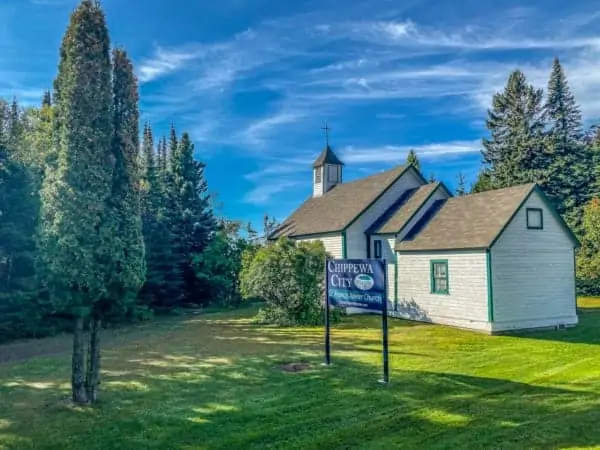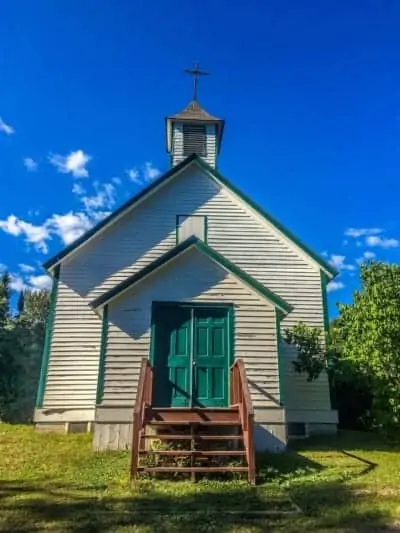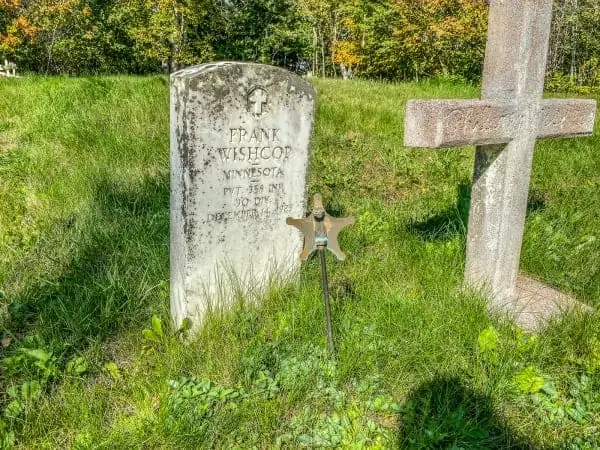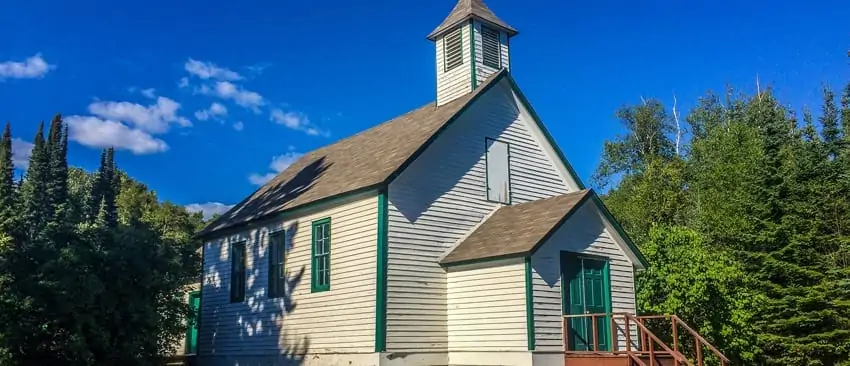A Small, Thriving Community
 Drive through the town of Grand Marais and right as you are leaving, just as the speed limit picks back up to 60, you’re there. At what remains of Chippewa City.
Drive through the town of Grand Marais and right as you are leaving, just as the speed limit picks back up to 60, you’re there. At what remains of Chippewa City.
Chippewa City was a thriving little village founded in the 1880s. By the 1890s it was home to about 100 families and growing. There are a few well-known residents of Chippewa City that North Shore visitors will likely recognize the names of. John Beargrease, made famous for his mail delivery route and subsequent sled dog race that bears his name, lived here with his family and artist George Morrison was born in Chippewa City in 1919.
Chippewa City Becomes a Ghost Town
Indeed, like other North Shore towns, many thought Chippewa City would continue to thrive for generations. However, the town’s population started to dwindle in 1901 when Highway 61 was expanded past Grand Marais, causing the removal of several homes and significant loss of land to the highway. A second blow came in 1907 after a fire destroyed several more homes. Luckily, the newly built St. Francis Xavier Church, the pride and joy of the community, was spared thanks to sailors from a government boat that came ashore to fight the flames. The 1918 flu epidemic then hit the community with another blow. Devastating the community. Finally, the Great Depression found even more families leaving the area. a
All of this eventually led to Chippewa City becoming a ghost town. By the late 1930s, none of the original residents remained.
The St. Francis Xavier Church
 Luckily, this is not a ghost town lost entirely to time. In fact, one building still exists and you can actually still go inside of it!
Luckily, this is not a ghost town lost entirely to time. In fact, one building still exists and you can actually still go inside of it!
Thankfully, the St. Francis Xavier Church survived and still stands today.
According to the Historic Cook County website, the St. Francis Xavier Church was built in 1895 under the direction of Father Joseph Specht. The building was built in the French style by Ojibwe carpenter Frank Wishkop of hand-hewed, dovetailed timber. It served as the only Catholic church in the Grand Marais area from 1895 until 1916 when St. John’s was built in town.
As the population of Chippewa City slowly diminished, so did the use of the church. Its final mass was conducted on Christmas 1936. The building sat mostly empty and unused for 2 decades until 1958 when efforts began to restore the building with the Lions and the Catholic Church working together in the restoration process. In 1998 the church was donated to the Cook County Historical Society and is on the National Register of Historic Places. It is open for a few hours in the afternoon on weekends during peak season (May through September or October).
The Chippewa City Cemetery
There is also a historic cemetery that still exists setback from Highway 61. Sadly, the “old side” of the cemetery is on the east side where most of the markers have been lost to time or removed due to being irreparably damaged. With little thought given to preservation. A few headstones remain, however, they are difficult to read. In recent years there have been some efforts made to identify the location of those buried in this part of the cemetery and to chart out the plots. This chart is on display in the church. Plans to renovate the cemetery have been ongoing for several years with little progress made.
 While Chippewa City is no longer there, the area is still inhabited. Homes and cabins once again dot either side of Highway 61 and the Cook County Home Center now sits where the community once was. It is now considered part of Grand Marais.
While Chippewa City is no longer there, the area is still inhabited. Homes and cabins once again dot either side of Highway 61 and the Cook County Home Center now sits where the community once was. It is now considered part of Grand Marais.
History Retold
In 2019, Staci Lola Drouillard’s book “Walking the Old Road: A People’s History of Chippewa City and the Grand Marais Anishinaabe” was released. The book tells the story of the residents who once called Chippewa City home. “The Old Road” refers to the path the residents would take to travel between Chippewa City and Grand Marais.
You can also watch Chippewa City: Passport Into the Past by the Cook County Historical Society. Or, listen to WTIP’s Walking the Old Road series on Chippewa City.
Getting There
Chippewa City is located along Highway 61 about 1 mile northeast of Grand Marais, MN. You will see the church on the lakeside of Highway 61.
If you find this sort of history fascinating, we recommend checking out the book “Minnesota’s Lost Towns Northern Edition” by Rhonda Fochs. Rhonda’s “Lost Towns” series covers the rise and fall of hundreds of communities from all over Minnesota with her “Northern Edition” focusing on the northern half of the state, which includes St. Louis, Lake, and Cook Counties.
Listen to Joe and Jaye explore and discuss Ghost Towns on the Exploring the North Shore Podcast:
[/fusion_text][/fusion_builder_column][/fusion_builder_row][/fusion_builder_container]

